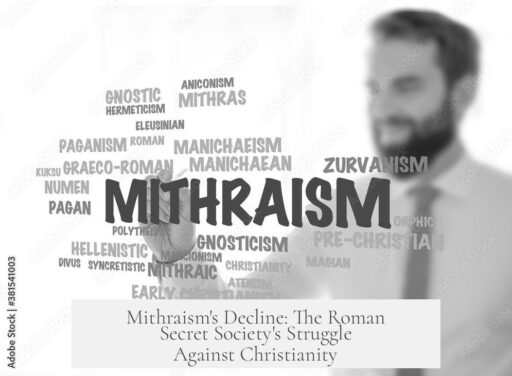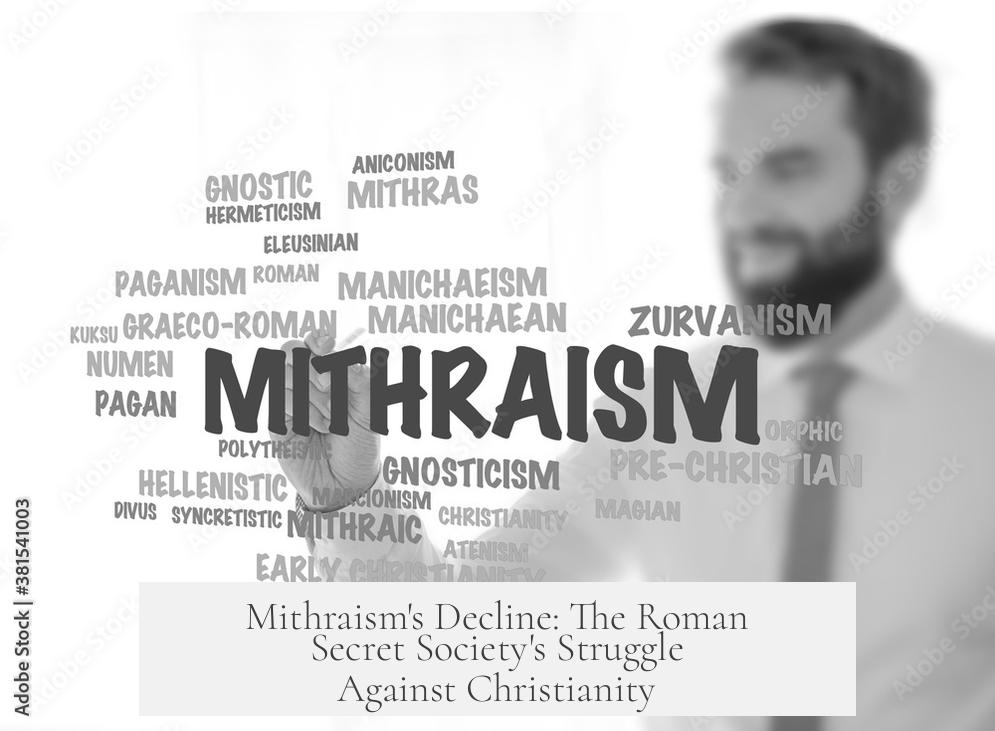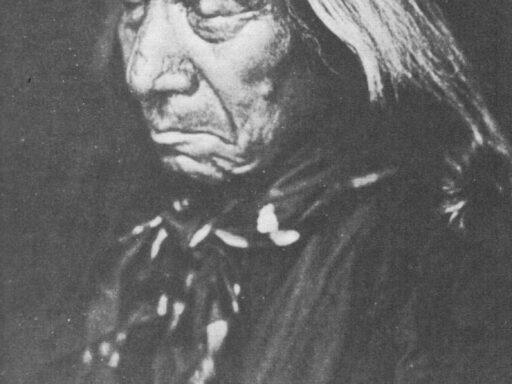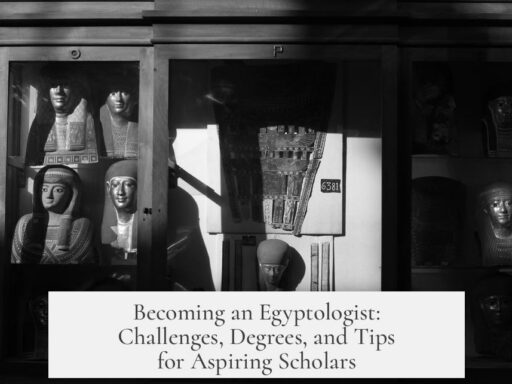Mithraism disappeared by the end of the 4th century CE as Christianity rose to dominance in the Roman Empire. It was a mystery religion, practiced mainly by soldiers, tradesmen, and slaves, which limited its social reach and growth. Unlike Christianity, Mithraism did not seek converts actively. This lack of broad appeal weakened its position as Christianity gained imperial support.
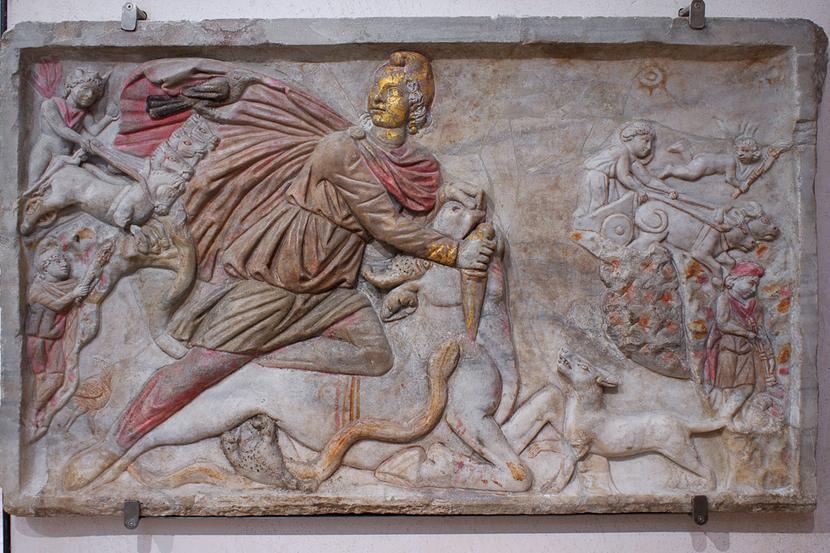
Mithraism served as a close-knit religious community with secretive rites. Its members often belonged to lower or middle social classes, and it functioned somewhat like a guild. The aristocracy joined only briefly during the pagan revival under Emperor Julian. Meanwhile, many Romans practiced multiple religions, so Mithraists also participated in civic rituals.
The religion faced key disadvantages that accelerated its decline:
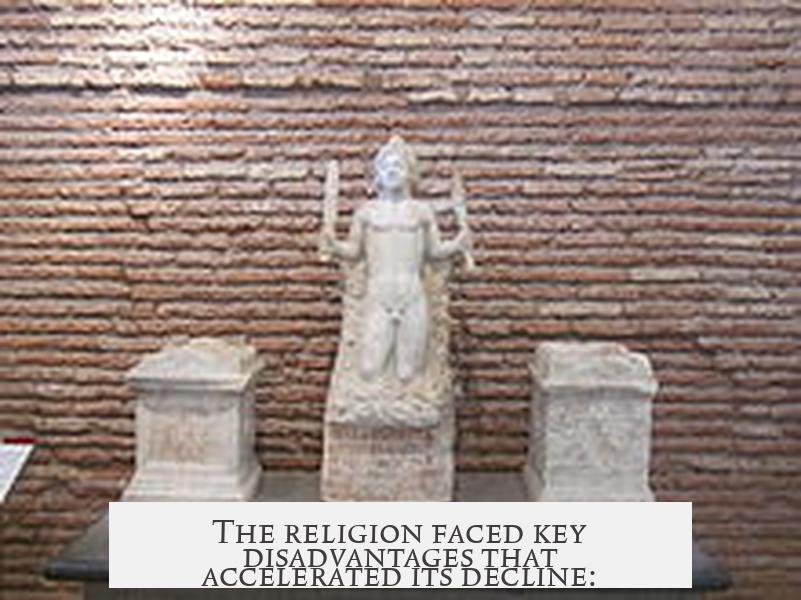
- Non-proselytizing nature limited expansion.
- Lack of elite backing prevented political influence.
- Christianity promoted an exclusive, dogmatic faith appealing to broader populations.
The decline culminated under Emperor Theodosius I, who issued laws (Theodosian decrees) between 389 and 392 CE to abolish remaining pagan practices. Archaeological finds at Mithraic temples, such as coins at Sarrebourg, confirm destruction by the late 4th century. These coins, dating up to Theodosius’s reign, suggest ritual sites were actively suppressed or repurposed.
Christianity often replaced Mithraic temples with churches, signaling cultural and religious dominance. This replacement underlined the deliberate suppression of older pagan cults. The systematic destruction erased Mithraic theology, leaving only archaeological records and scattered literary mentions to reconstruct what the faith entailed.
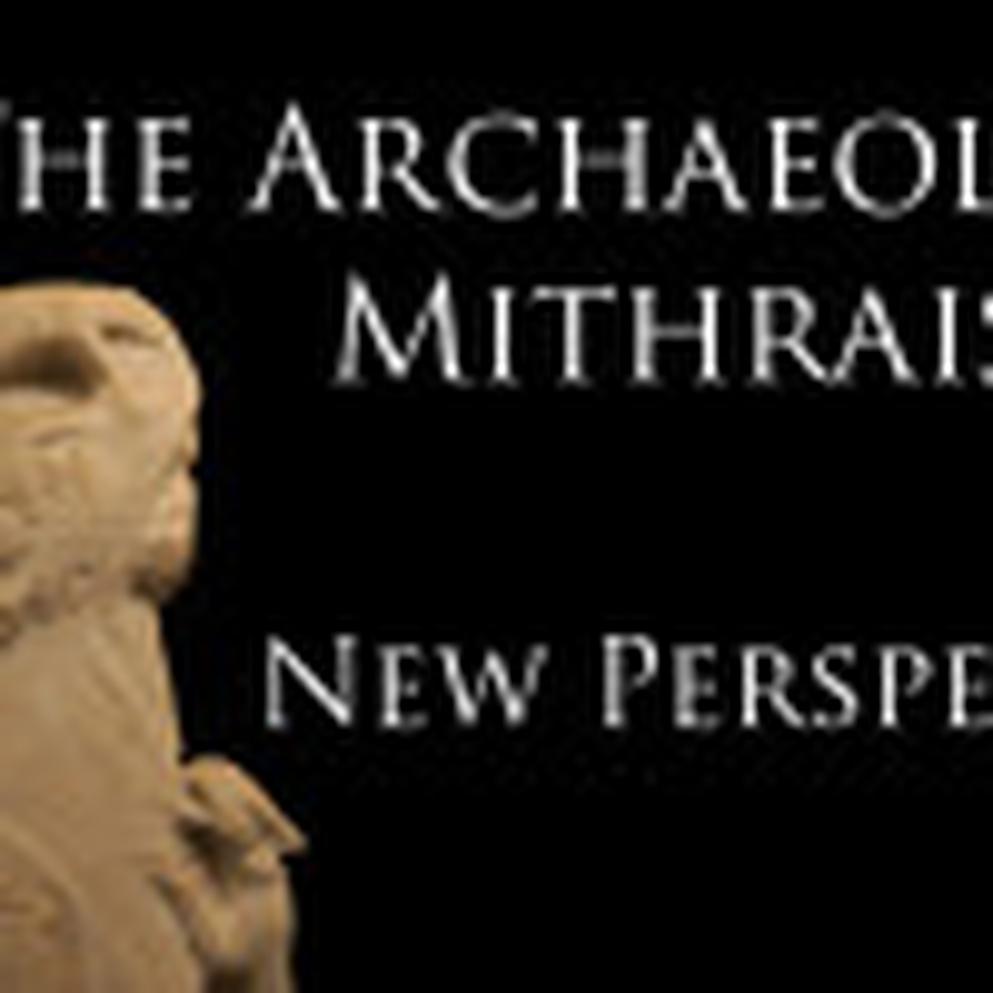
By the 5th century, Mithraism was effectively extinct. Christianity’s rise left little room for mystery religions that depended on secret rites and smaller communities. The comprehensive Christian suppression ended Mithraism’s public practice and erased its influence within Roman society.
- Mithraism was a secretive, non-proselytizing religion mostly among lower social classes.
- Christianity’s imperial support facilitated suppressing Mithraism by the late 4th century.
- Archaeological evidence shows ritual site destruction under Theodosius I.
- Christian churches often replaced Mithraic temples, signifying religious transition.
- Mithraism’s theology remains unknown due to deliberate Christian suppression.
What Happened to Mithraism? A Dive into History’s Lost Mystery
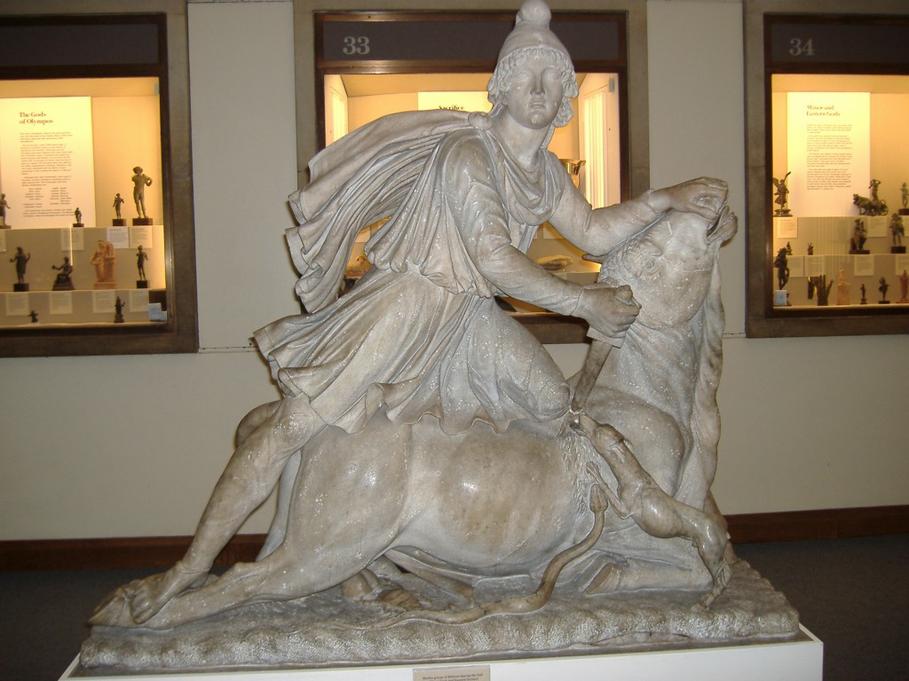
So, what happened to Mithraism? In short, Mithraism, once a thriving mystery religion in the Roman Empire, was fully extinguished by the 5th century. It fell victim to Christianity’s rise, political decrees, and social shifts that left it buried beneath layers of history and stone churches.
But the story isn’t as simple as “one religion replaces another.” Let’s explore the unique nature of Mithraism, the challenges it faced, its decline, and why it vanished almost without a trace — except for coins, ruins, and the mysteries it left behind.
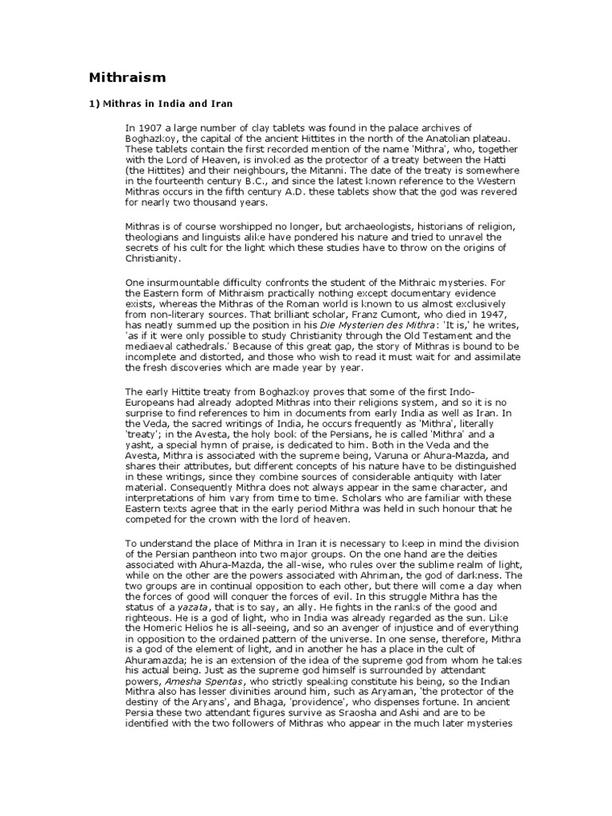
The Secret Society of the Roman Empire
Mithraism wasn’t your typical ancient religion with grand temples full of worshippers. It was a mystery religion, often called the Mysteries of Mithras in antiquity. What does that mean? It functioned in secrecy, with rituals known only to its initiates. Unlike Christianity, or modern religions that actively evangelize, Mithraism wasn’t about spreading beliefs far and wide.
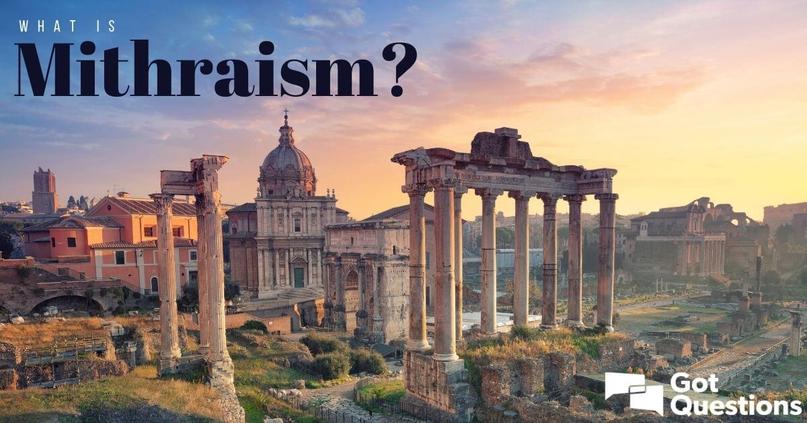
Picture a secret club. Its members were mainly Roman soldiers, tradesmen, merchants, and low-ranking officials. Even slaves and freedmen participated. However, the aristocracy largely stayed away until a very brief pagan revival in the mid-4th century CE grabbed their attention.
Given this social mix, Mithraism operated a bit like a trade guild or a fraternity, with ceremonies and rites designed to bond its members. It didn’t clash with the mainstream polytheistic Roman religion. You could be a Mithraist, worship Jupiter at the civic temple, and belong to other mystery cults—all at once—no conflicts.
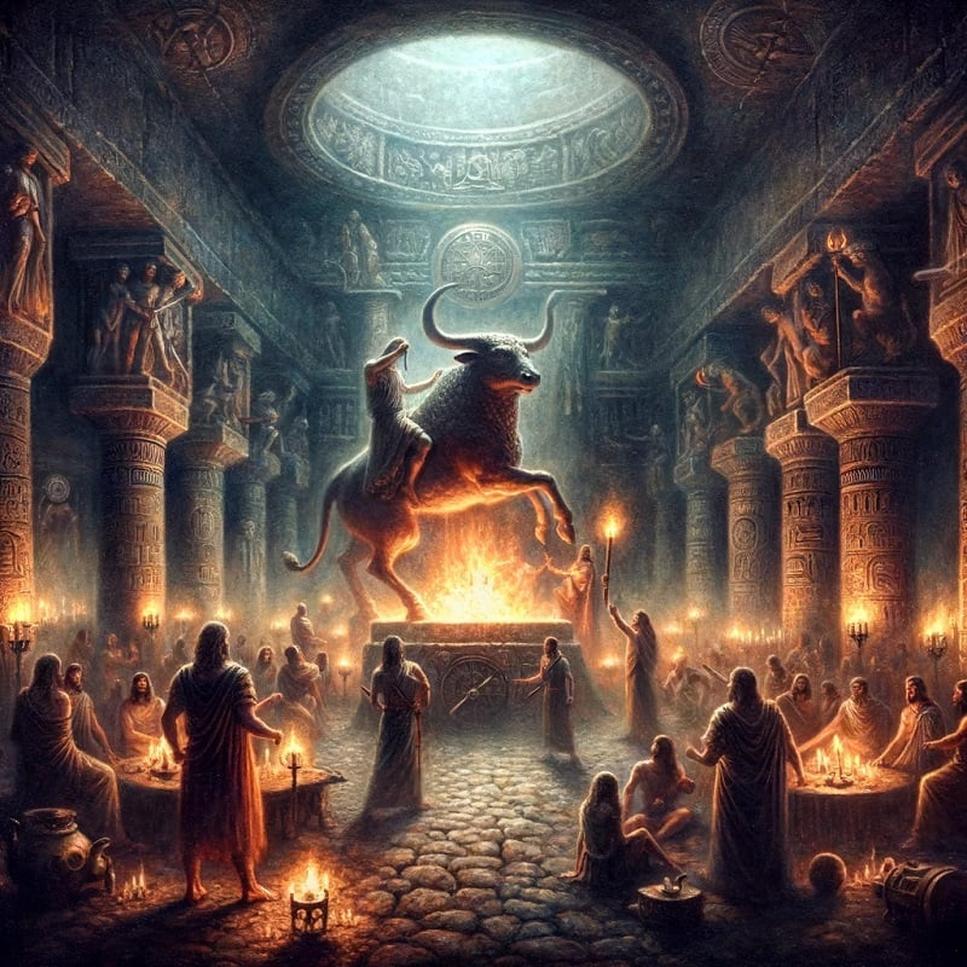
If we had to compare it to something today, think of Mithraism more like the Freemasons than a major world religion. It was exclusive, ritualistic, and social but not seeking to dominate Rome’s religious landscape.
Why Did Mithraism Struggle to Survive?
The main problem? Mithraism lacked the social clout and recruitment methods to sustain growth.
- No Elite Backers: Without strong aristocratic support, it carried less political weight.
- No Open Evangelism: Unlike Christians who sought converts, Mithraism kept quiet about itself, limiting its numbers.
- Lack of Dogma: It didn’t demand strict belief systems, which weakened unified identity.
When Christianity started sweeping through the empire—promising salvation, eternal life, and a community open to all—it changed the religious game. Christianity’s clear doctrine and energetic outreach contrasted sharply with the quiet, inscrutable nature of Mithraism.
The Final Blow: Christianity’s Rise and Theodosian Decrees
Mithraism’s demise happened in a political and religious storm. When Emperor Theodosius I became the ruler in the late 4th century, he aggressively made Christianity the empire’s state religion.
Between 389 and 392 CE, Theodosius issued the Theodosian Decrees. These laws shut down pagan temples, banned sacrifices, and targeted all remaining “false” religions. No mystery cult—Mithraism included—could operate openly anymore.
Archaeological evidence shows how forceful this transition was. Excavations of Mithraea—temples dedicated to Mithras—reveal coins scattered across their floors, notably in Sarrebourg. These coins were offerings, now abandoned in chaos. Christians likely trashed them as idolatrous relics, arranging no proper closure ceremony for the ancient faith.
The newest coins found match Theodosius’s reign, ending in 395 CE. By then, Mithraism had suffered its final blow.
Christian Reuse of Mithraic Sites
One fascinating detail: Christians often built churches over former Mithraea. This wasn’t random. It was symbolic—a deliberate move showing that the old ways were over, replaced by the “true” faith.
This architectural overlay erased much of Mithraism’s physical trace. It also tells us about an intense cultural competition. Christianity wasn’t just a spiritual movement; it was a social revolution that demanded public real estate and rituals.
Why Don’t We Know More About Mithraism?
You might wonder: if Mithraism was so popular among soldiers and tradesmen, why is it so mysterious now? Why no clear theology?
Christian suppression was thorough. They destroyed writings, persecuted practitioners, and made sure rivals vanished. Unlike Christianity, Mithraism left no surviving scriptures or doctrinal texts. What scholars know comes mostly from inscriptions, temple art, and scattered literary mentions by outsiders.
This lack of written records deepens the mystery. Our knowledge relies on detective work from archaeology and historical fragments. This secretive nature, simultaneous with active Christian suppression, means Mithraism remains partly an enigma.
In Summary: Mithraism’s Quiet Departure
Mithraism thrived quietly for centuries. It was a guild-like, secret religion for many Romans but lacked elite backing and missionary zeal.
Its fall was swift once Christianity rose to power. Political decrees, cultural shifts, and Christian zeal extinguished it by the 5th century. The temples were destroyed or converted. The followers assimilated or disappeared. Today, it hides in ancient ruins and coins scattered across the empire.
So next time you visit a Roman site or museum, remember: Mithraism was once a shadowy force within Rome’s polytheistic chaos, now lost to history but never fully forgotten.
Curious: Could any modern mystery group survive the rise of a new global religion today? History shows that social reach, political power, and openness often decide who stays and who fades. Something to think about while sipping your coffee.
What social groups mainly practiced Mithraism in the Roman Empire?
Mithraism was popular mostly among soldiers, tradesmen, merchants, low-level officials, slaves, and freedmen. The aristocracy joined only late in its history, during a short pagan revival in the mid-4th century CE.
Why did Mithraism fail to compete with Christianity?
Mithraism did not actively seek new members, lacked support from the upper class, and had no organized dogma. Christianity’s aggressive growth and state backing overshadowed it.
How and when did Mithraism come to an end?
Mithraism disappeared by the end of the 4th century. Emperor Theodosius I issued decrees between 389 and 392 that banned pagan religions, including Mithraism.
Is there any evidence of how Mithraic sites were treated after Christianity prevailed?
Many Mithraic temples were destroyed or converted into churches. Coins and artifacts were scattered or removed, seen by Christians as offerings to false gods.
Do we have detailed texts or beliefs of Mithraism today?
No formal Mithraic theology survives. Knowledge comes from archaeological finds, inscriptions, and indirect literary mentions, as early Christians suppressed its records.
